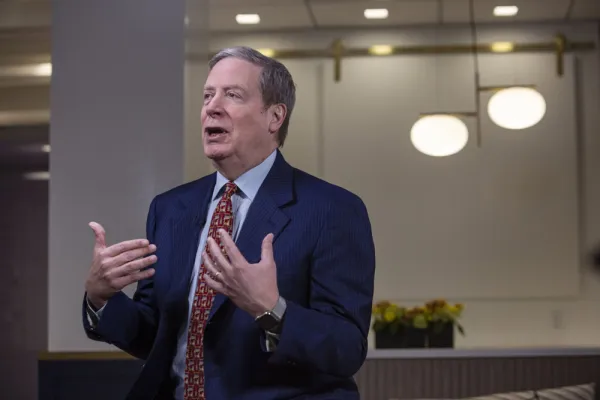Restoring forests, wetlands and wildlife habitat is exciting. Leave it to the bankers to make financing such environmental projects downright boring.
As climate concerns and other environmental anxieties mount, Wall Street and global bankers are hammering the complexities of conservation into the kind of mature, repeatable financial products bankers sell every day. That the payments are driven by revenues from carbon credits, green bonds and sustainable commodities production is an added bonus.
Earlier this year I attended an invitation-only gathering of bankers and conservationists at Credit Suisse’s New York offices, across the street from Madison Square Park.
“The mantra of this event is, ‘scalability, repeatability, investability,’” said John Tobin, the financial institution’s global head of sustainability affairs. Also speaking at the conference were senior executives from Goldman Sachs Group, JPMorgan Chase & Co. and big environmental organizations such as the Nature Conservancy.
Participants at the conference voiced a common theme: Clients want cookie-cutter deals worth billions of dollars in timber, agriculture and water, along with multibillion-dollar infrastructure bond offerings.
“We get meaningful inquiries right now about ‘Where can we allocate more capital?’” said Kyung-Ah Park, head of the environmental markets group at Goldman Sachs. Camilla Seth, executive director of JPMorgan’s social and sustainable finance group, agreed, noting that the financial institution has “a growing set of clients who are asking for product in this area.”
The bankers and conservationists at the conference agreed that some sectors of the conservation market are just about ready to tap mainstream capital to bankroll large-scale restoration and conservation. Only about $52 billion per year flows to conservation projects, the bulk of it via public and philanthropic funds. That’s far short of the $300 billion to $400 billion needed per year for conservation efforts.
Some offerings have already gone mainstream. Green bond issues tripled to $36.6 billion from a year earlier. Originally pioneered by the World Bank and other development finance institutions, more and more municipalities, states and corporations are getting into their own bond offerings. Said Park about green bonds: “This is as plain-vanilla as it gets right now.”
Other emerging revenue streams for investors include sustainable — read, premium-priced — food, certified timber and the sale of credits for carbon storage and other green services such as the cooling of wastewater runoff through river restoration.
To be sure, fundraising continues to be tough for many funds. Carbon markets have been volatile, and policy risks remain maddeningly high. Yet even with the still low market prices for carbon credits, some forest preservation deals pencil out. California’s cap-and-trade market has become one of the largest new sources of capital for sustainable forestry projects nationwide.
One such example is $2 billion, Sydney-based fund manager New Forests’ financing and development of the first forest carbon project registered on the California market. Another is the €105 million ($122 million) raised by the Luxembourg-headquartered Althelia Climate Fund to help back new production of certified sustainable cocoa, coffee and other products, as well as forest carbon credits for the voluntary markets in Europe. Althelia’s fundraising included €15 million from individual investors through special Nature Conservation Notes issued by Credit Suisse, one of the first such offerings to be available to noninstitutional investors as well.
Beyond carbon, other ecosystem markets are growing as well. A private nutrient bank, another green financial institution, helped farmers around the Chesapeake Bay reduce phosphorus runoff and sell credits to the Commonwealth of Virginia to offset the impact of a transportation project for half the price of a traditional storm water project. In Oregon the Freshwater Trust is cooling the Rogue River with shade from native trees and shrubs, paid for by credits from the city of Medford, which needed to mitigate warming caused by wastewater discharges.
“The ecosystem markets are starting to work,” says Jason Weller, chief of the Natural Resources Conservation Services, a unit of the U.S. Department of Agriculture. “They’re coming to life.”
If such transactions can become routine, this Earth Day could be marked by a planetary turn from degradation to restoration. “We will know we have succeeded when more people realize that conservation can also be an investable proposition, that you really can make money in conservation,” said Credit Suisse’s Tobin.
Nature has to pay for itself. The good news is that it can.
David Bank is the editor and CEO of ImpactAlpha , an information service on green and socially responsible investing in San Francisco.






